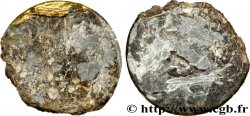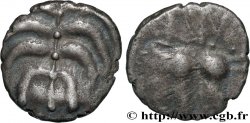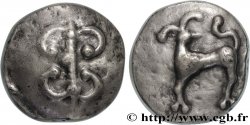bga_155554 - HELVETII (Currently Switzerland) Denier au carnyx
Not available.
Item sold on our e-shop
Price : 320.00 €
Item sold on our e-shop
Price : 320.00 €
Type : Denier au carnyx
Date: c. 80-50 AC.
Metal : silver
Diameter : 12,7 mm
Orientation dies : 2 h.
Weight : 1,59 g.
Rarity : R3
Coments on the condition:
Denier sur un flan un peu court, avec un droit légèrement décentré et un revers centré mais incomplet. Fine patine grise, avec une surface légèrement poreuse
Obverse
Obverse description : Tête très stylisés à gauche, la chevelure en mèches tirées en arrières ; la légende devant le visage.
Reverse
Reverse description : Cheval bondissant à gauche, un carnyx au-dessus de la croupe et un bouclier (?) entre les jambes.
Commentary
Les deniers de ce type sont excessivement rares. Longtemps uniquement connu par l’exemplaire du musée de Zurich, plusieurs monnaies de ce type sont passées en vente ces dernières années. Il figure même dans le “Neuer HMZ-Katalog, Band 1 : Die Münzen der Schweiz Antike bis Mittelalter (monnaies suisses de l'antiquité au moyen age)”.








 Report a mistake
Report a mistake Print the page
Print the page Share my selection
Share my selection Ask a question
Ask a question Consign / sell
Consign / sell
 Full data
Full data









